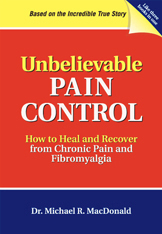
SO, HOW DO YOU MEASURE PAIN?
A lawyer, I know, told me an interesting courtroom story. The lawyer wanted to try to show the jury how much pain her client had been experiencing, since his car accident. She had asked her client to save up all of the prescription bottles that he had been prescribed, since his accident. Then, during the trial, her client brought in a large clear bag filled with hundreds of prescription bottles. The judge was not too impressed at this dramatic presentation. But, the jury’s eyes were wide open.
I would not recommend this approach with your doctors. It could easily backfire. Instead of understanding how much pain you are in, your doctor might conclude that you had a drug problem. You do not want this happening.
When it comes to pain, patients, doctors, lawyers, insurance adjusters and family members all have the same problem. There is no easy and objective way of measuring the severity or intensity of the pain an individual experiences.
Several years ago, the Workers Compensation Board of Ontario (now the Workplace Safety and Insurance Board) confronted this same problem, when they were trying to formulate a new policy related to chronic pain injuries.
WCB ended up with what I thought was a reasonable approach. Since there was no way of objectively measuring an injured worker’s chronic pain, they decided that one indicator would be what they called marked life disruption. Examples of marked life disruption included loss of work, loss or disruption of leisure activities and disruption to the persons family life.
Pain and loss. This combination is what WCB used as a valid indicator of the reality of chronic pain.
Essentially, people reported continuous pain since their accident and there is evidence of marked life disruption, they are assumed to suffer from chronic pain. Then, they become eligible for treatment services and income replacement benefits from WCB.
This can also be a useful approach for you to use with your doctors. It is even a useful way of thinking if you have to go and be assessed by insurance doctors.
You want to explain the details of the pain you experience and, at the same time, explain the losses and disruption to your life, that you have sustained as a result of your pain. Together, these factors will make it easier for your doctors to understand how you feel and to offer you the treatment you need.
Sometimes, patients only describe one part of the equation. They only focus on describing the pain they experience. When they do that, other people will only get part of the picture. And, with only part of the picture, they will not be able to understand all the pain and loss and suffering you have been going through..
There are several other indirect ways of measuring pain which I will write about in my next post. Please don’t miss it.
* * *
Thank you for reading. Thank you to John Jackson (photo above) and Rachel Walker (image below), both from Unsplash, for your creative work. And, please feel free to steal, share or join our growing list of subscribers.
Mike




